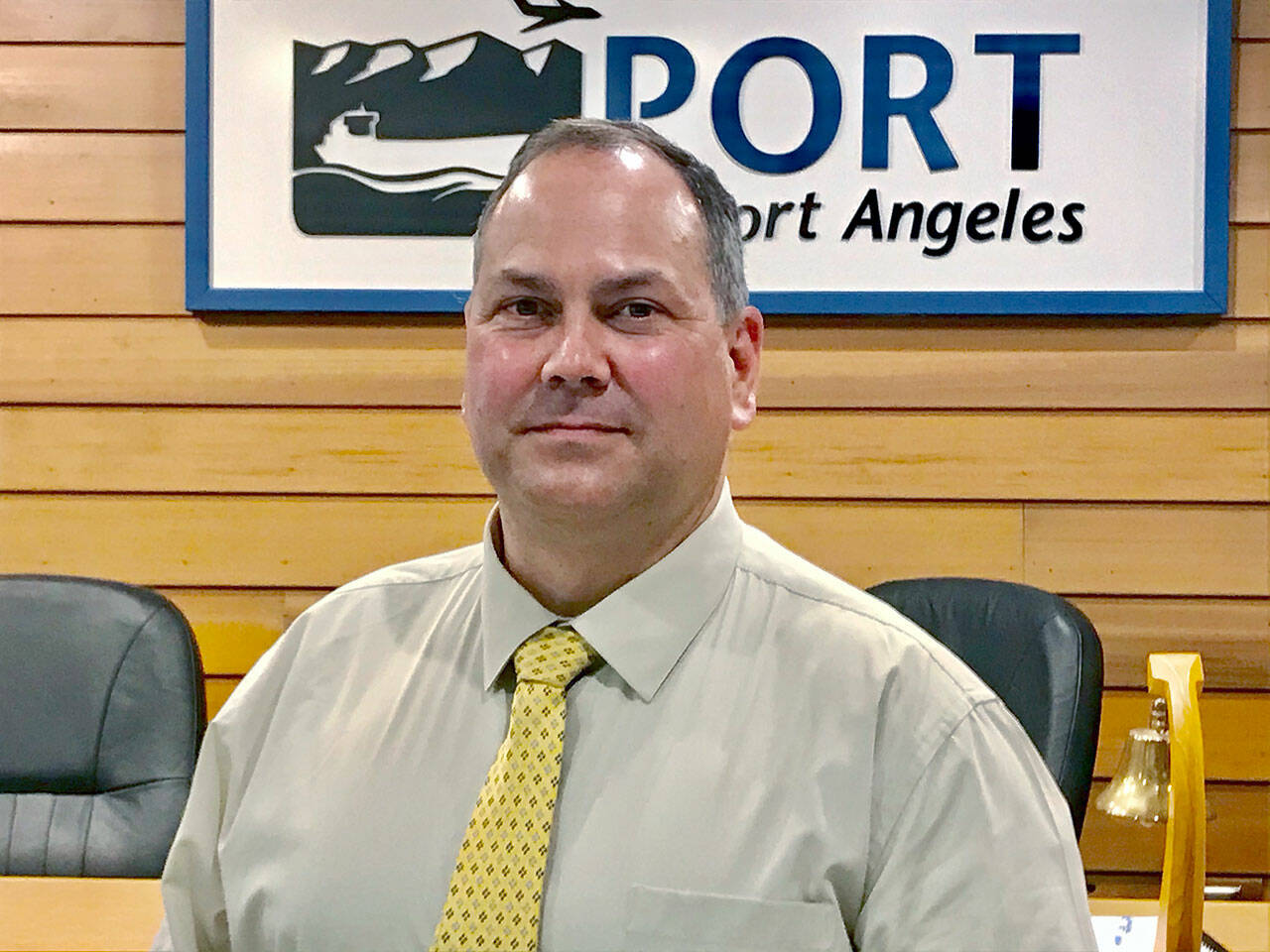PORT ANGELES — A penalty for violating Clean Water Act stormwater regulations could have cost the Port of Port Angeles up to $907,000, Executive Director Geoff James said.
Instead, according to a proposed settlement agreement with the Environmental Protection Agency, the penalty will be $67,000, drawn from the port operations budget, James said Friday.
Port Commissioners Steven Burke, Colleen McAleer and Connie Beauvais agreed to pay the fine in December, describing the violations as administrative and saying pollutants were not released into Port Angeles Harbor.
James said the EPA came to settlement discussions with a proposed penalty of $74,500, and the final amount both sides agreed on was $67,000.
Port officials had estimated the maximum fine could be $907,000 but had put together a ballpark estimate of between $62,000 and $440,000.
The port treats stormwater before depositing it through outfalls into the harbor. Penalties could have reached $56,460 daily for each violation.
The fine covers the tax district’s failure to conduct required monitoring, to properly store a 55-gallon drum of pollutants with a secondary container, to adequately sample stormwater when it used up to 9-year-old calibration solutions for measuring turbidity and pH, and failure to update a stormwater pollution prevention plan.
“Obviously, it would be better if it was lower, but I can’t push back on not having a secondary container and barrel we moved out of the shop and put in our log yard,” James said.
The consent agreement is at epa.gov. A public comment period expires Feb. 16. Comments can be sent to R10_RHC@epa.gov. The agreement could change as a result of public comment.
The fine is based on a Feb. 13, 2020, National Pollutant Discharge Elimination System Compliance Inspection Report by Matthew Vojik, an inspector for EPA’s Region 10 Enforcement and Compliance Assurance Division.
The violations of the port’s 2015 and 2020 stormwater permit occurred between at least January 2017 through February 2020.
Port officials said they were surprised Vojik inspected port facilities instead of the state Department of Ecology, which issued the port’s Industrial Stormwater general permit in 2014 and 2019.
James said he did not know what prompted the inspection.
In an interview last week, EPA officials would not say if there was a complaint or some other reason that prompted Vojik’s visit and did not say if there was a discharge of pollution not allowed in the permit, referring to the settlement agreement.
“Those are violations of their permit, which doesn’t necessarily need to be that you had a discharge of pollution,” agency spokesperson Suzanne Skadowski said.
“The odds you’re actually going to find the pollution coming out somewhere the day you visit, that’s pretty slim, but if you’re in violation of the permit, then you’re in violation of the permit,” she added.
“The purpose of a permit is to prevent releases.”
Mickey Jencius, the Clean Water Act enforcement section chief for Region 10, said most of her region’s enforcement cases are violations of permits.
“There might be a condition in the permit that specifies a level of pollution, so if there’s an exceedance of that level of pollution, we could act on that permit requirement,” she said.
“Most of our actions are permit violations because either it does specify a level of pollution or it requires lab work or it requires maintenance. There’s a whole host of things that entities have to do to ensure compliance.”
Jencius would not comment on what it was that the port did or did not do that added up to a $67,000 fine.
“That’s actually something we can’t discuss,” she said.
Jencius said both sides agreed that negotiations are a confidential process.
“We don’t go through the details, we don’t share our calculations. So we follow the policy, and the policy prescribes what one can do to calculate the penalty, and that’s what we did,” she said.
“EPA calculates the penalty, and then we present the entity with the penalty amount during negotiations,” Jencius said.
“In typical practices, EPA will calculate a penalty and then, during negotiations, there may be an ability to discount penalty because of good faith. The entity works with us in a very cooperative manner, and the policy will allow us to discount a specific percentage.”
Jencius said Ecology is required to visit facilities they monitor under EPA authority.
“You see [Ecology] more often, because they go once every five years, once every two years. It depends on what’s in the plan that we have with them,” she said.
“We also send our people wherever we want to go, and we coordinate these things with the state. We’ll let them know when we’re going places, so for us, it’s not unusual for us to go to a place like Port Angeles to investigate,” she said.
“This for us is business as usual. But I think optically, folks are just, they’re used to seeing Ecology, because that’s who comes and visits them every two years, every five years, et cetera.”
________
Senior Staff Writer Paul Gottlieb can be reached at 360-452-2345, ext. 55650, or at pgottlieb@peninsuladailynews.com.

